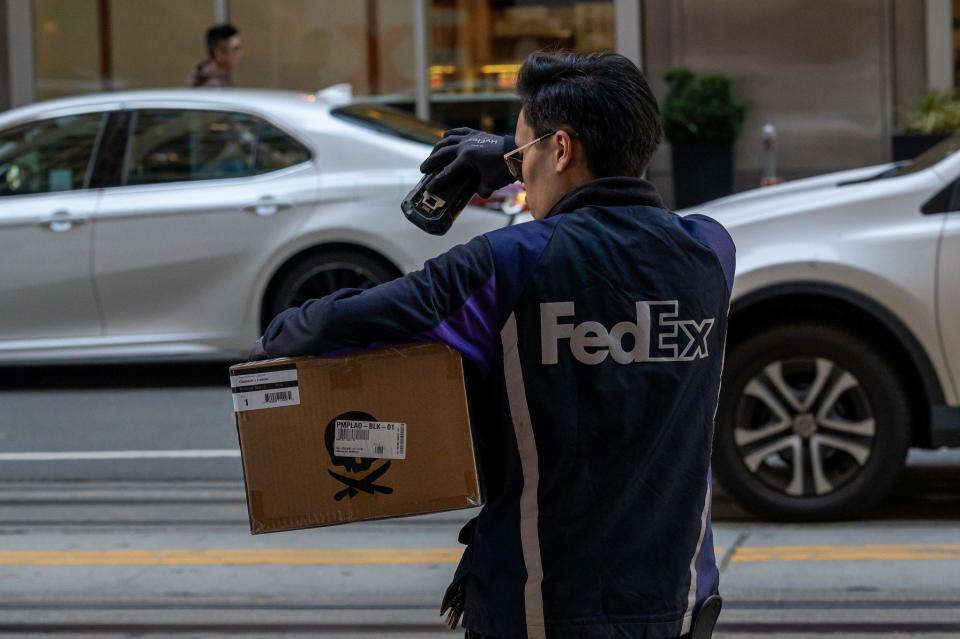FedEx promised investors $4 billion savings by consolidating operating units—the CTO had to figure out how tech would deliver

Adam Smith had worked for one employer, FedEx, for nearly a quarter of a century.
But for the past 50 years, and nearly all of Smith's tenure, FedEx itself wasn't operating as a single business. The delivery company's various operations—FedEx Ground, FedEx Services, and FedEx Express among them—were all managed independently. IT leaders at those business units were given autonomy to seek out their own technology solutions that best aligned with the particular delivery services they offered customers.
The corporate refrain was "compete collectively, operate independently, and managed collaboratively." Revenue grew, but so did the technology complexities.
That’s changing as Smith and other C-suite leaders rethink what it means to be “one FedEx.”
“What we're really focused on now is how, as a company, do we leverage the technology and the data that'd be more efficient and drive greater efficiency and how we support our customers,” says Smith, who began his career at FedEx as a senior programmer analyst in 2001, and later became a director and then VP, before ascending to the CTO role in April 2020.
That’s led FedEx to take a fresh look at the technologies that support delivering packages across 220 countries and territories, with shipments zigzagging through roadways and the skies. “There's just so much technology inside FedEx,” says Smith.
By June, FedEx's express, ground, and services units will consolidate into Federal Express Corporation. FedEx says a more efficient and intelligent network will be able to better handle curveballs like severe weather, by shifting volume within the various business units when storms hit. Smith is also streamlining vendor relationships and reimagining technology systems that were separately developed by the different divisions.
One visible example is the handheld devices used by couriers to track packages for Express and Ground. Previously, two different devices were developed, one to help guarantee delivery by the next day, at a precise time and an entirely different device designed to track deliveries by a specific number of days. FedEx now uses a single handheld device for both types of deliveries.
Technology consolidation is key to FedEx's efforts to achieve its goal, announced last year, of $4 billion in cost savings by the end of fiscal 2025 under the new "one FedEx" unified delivery model. That includes greater efficiencies for the technologies that support back office functions like legal, finance, and HR.
Another way FedEx hopes to get more efficient under a single entity is by more easily utilizing and sharing data. “We have a lot of data that we've collected over the years,” says Smith. “How do we harness that data and make it available for our customers?”
Data can help FedEx share more details about delivery timing, which can improve supply chain management for larger customers. This manifests through technology like FedEx’s photo-based proof of delivery tool. Launched in 2022, the tool sends customers a photo showing the exact location of a package once delivered to their address.
Smith says the proof of delivery feature was made possible thanks to FedEx’s all-in bet on the cloud. FedEx works closely with Microsoft Azure but also has some workloads with Google and Oracle. By the end of this year, FedEx will close all of the company’s data centers and retire all of the company’s mainframe computers to save $400 million in annual savings.
Automation presents another technology opportunity for Smith. He envisions a future “dark dock,” a freight facility that's devoid of humans and would use robotics and other autonomous tools to move pallets on and off of trailers.
And then there’s generative artificial intelligence. Smith sorts these solutions into three buckets. The first involves leveraging the capabilities developed by FedEx vendors including Microsoft, Salesforce, and ServiceNow. Then there are efficiencies to the work being done at FedEx, including making developers more efficient with tools like GitHub Copilot. Lastly, there's the potential for generative AI to transform FedEx's core pickup and delivery business.
For now, Smith says, FedEx is "focusing on the edges" of generative AI, as the technology needs to mature a bit more before he fully dives in. Smith is also casting a wide net and not settling on any one solution or vendor.
“There’s so much being brought to market every day,” says Smith. “It takes a lot just to stay on top of where the true opportunities are as all of these capabilities materialize.”
John Kell
Send thoughts or suggestions to CIO Intelligence here.
P.S. We'll be discussing AI and other topics at Fortune's annual, invite-only Brainstorm Tech summit in July. Confirmed speakers include Google Deep Mind chief scientist Jeff Dean, Paramount EVP Global Production and Studio Technology Anthony Guarino, and Salesforce SVP AI, Analytics, and Data Susan Emerson. Want to join us? Register here.
This story was originally featured on Fortune.com

 Yahoo Finance
Yahoo Finance 